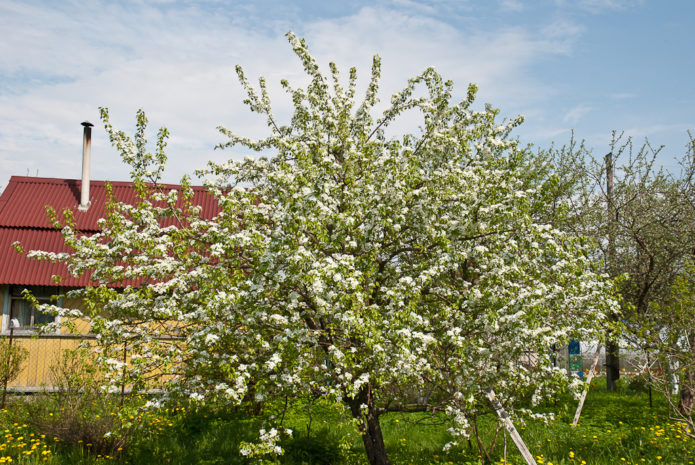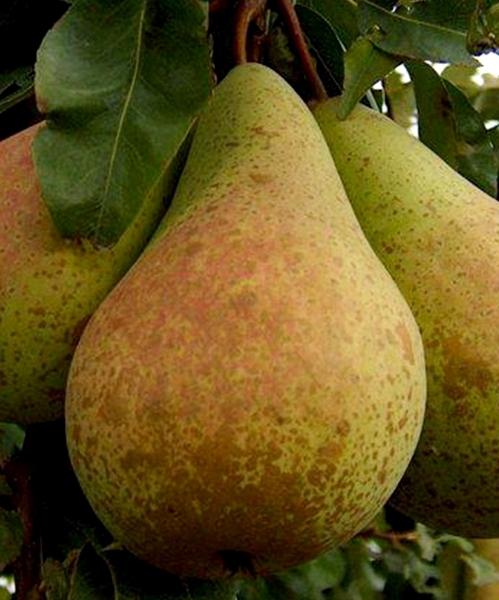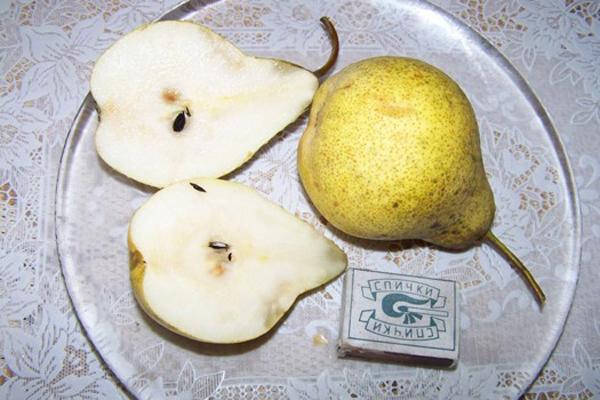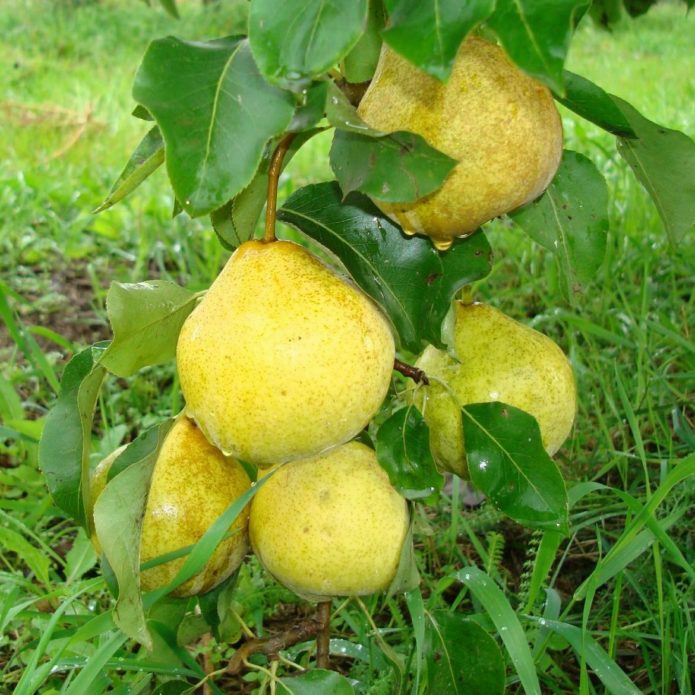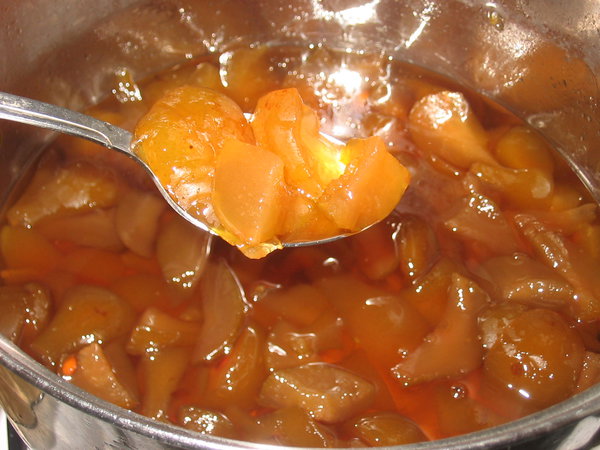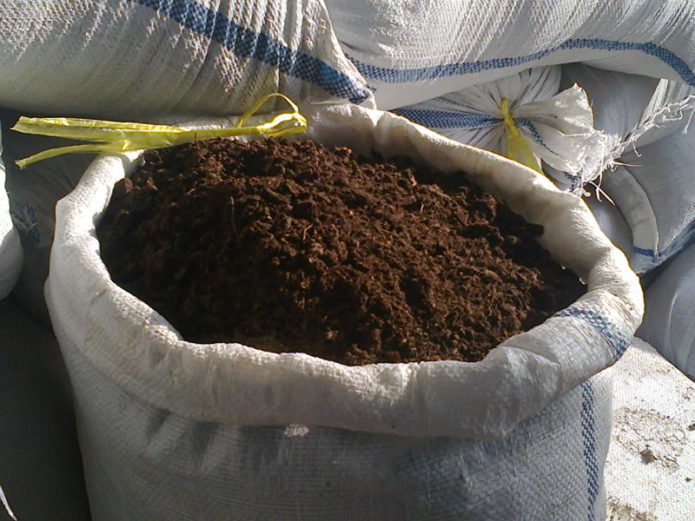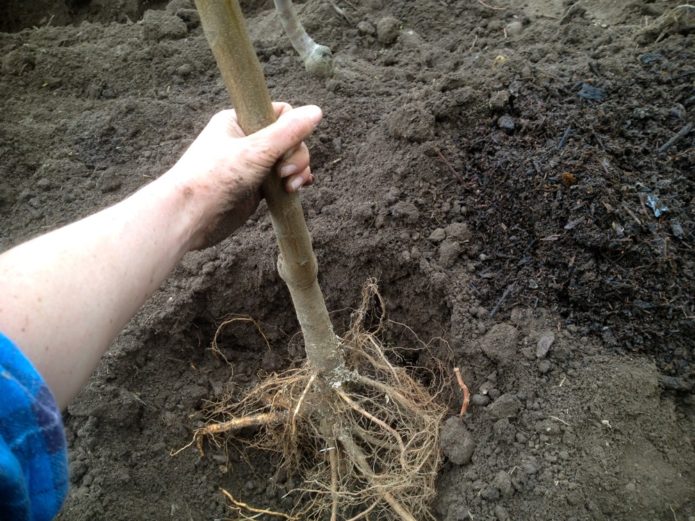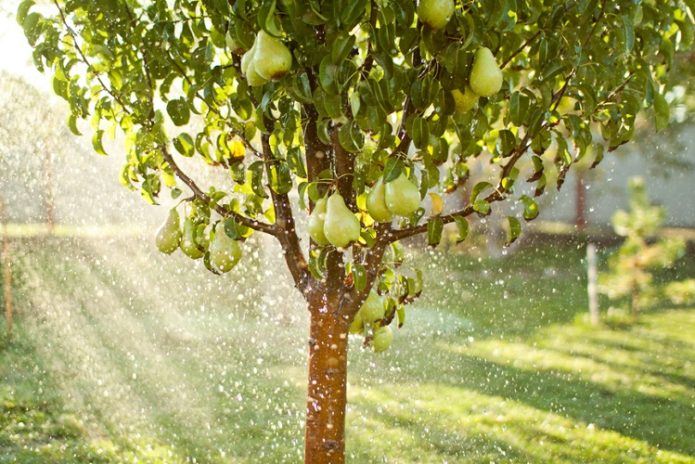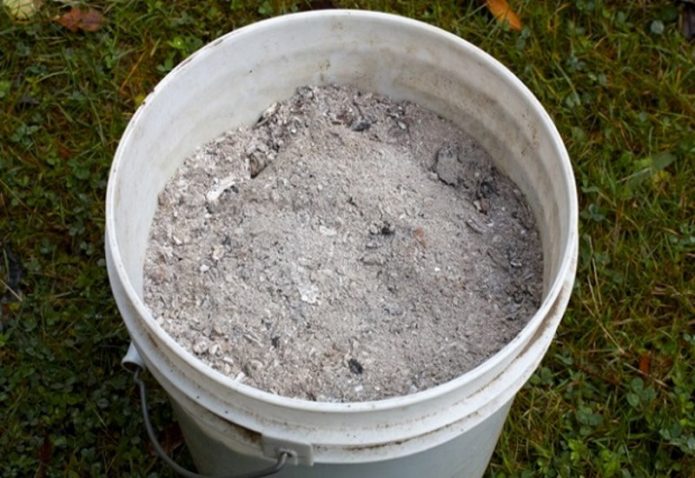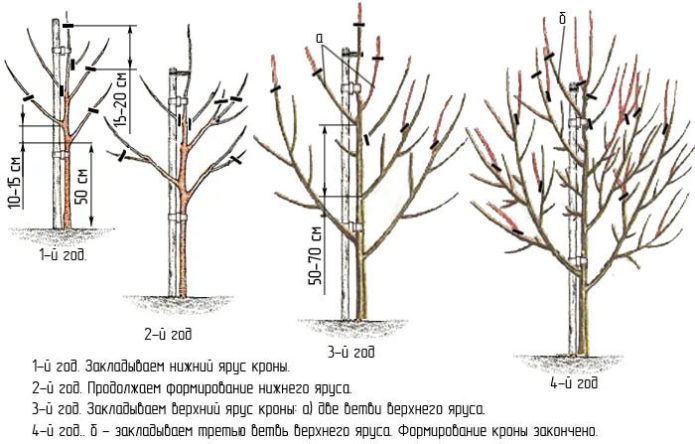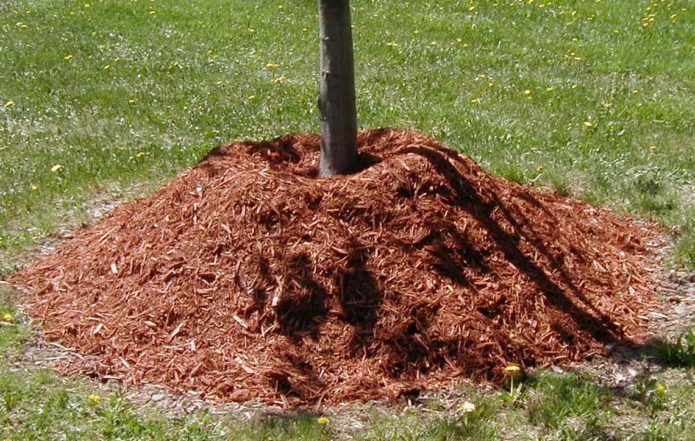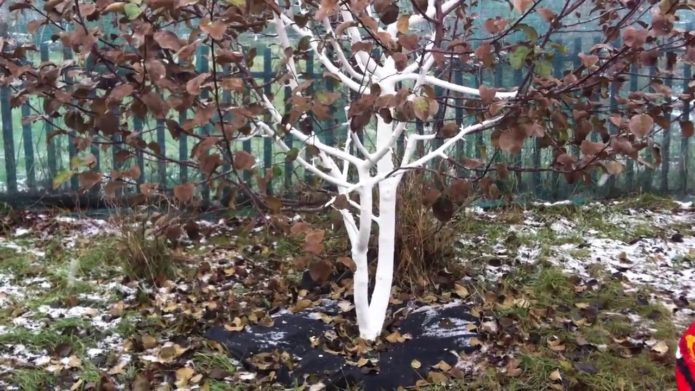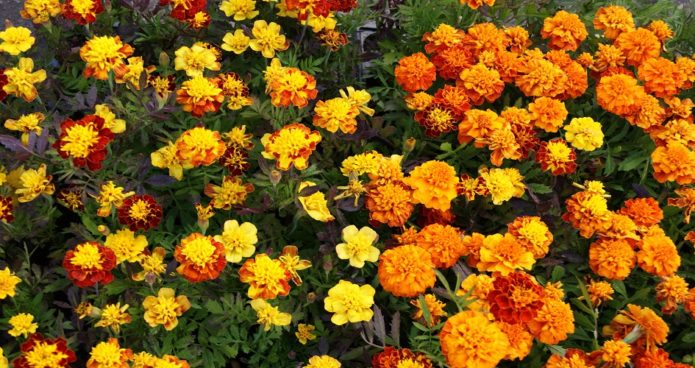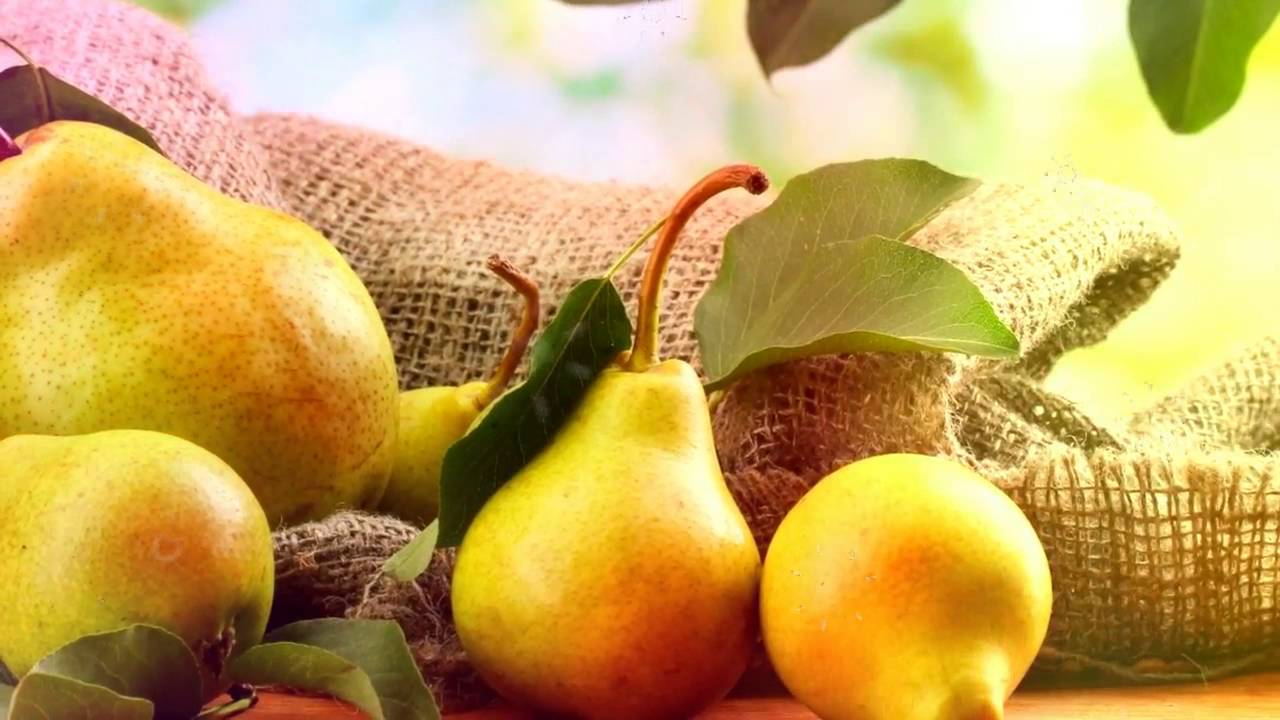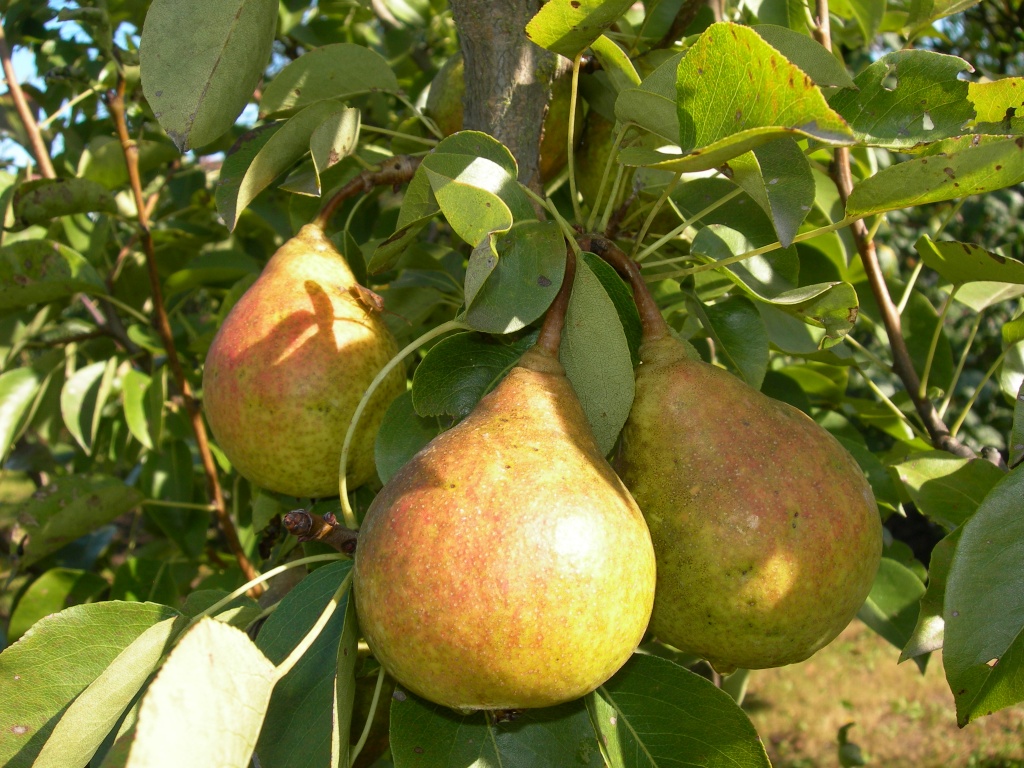Many gardeners grow a pear in their personal plots. But before, their capabilities were severely limited. This originally southern culture did not tolerate the cold and the vagaries of the weather. Accordingly, in Russia, it was only suitable for growing in warm regions with a subtropical climate. But now there are new varieties bred by breeders that are distinguished by frost resistance, relative unpretentiousness in care and good productivity. At the same time, the taste and size of the fruits are not inferior to southern pears, often called "honey" for their sweetness. These include the Prosto Maria variety, which has many undoubted advantages.
Content
Pear Just Maria: description, advantages, disadvantages
Pear Prosto Maria is a relatively recent achievement of Belarusian breeders from the Institute of Fruit Growing. Despite the name, it has nothing to do with the Argentinean TV series, which was very popular in Russia in the early 90s. The variety was named after its creator, Maria Myalik. The group of breeders under her leadership took 35 years to work. The “parents” of the new pear are a hybrid codenamed 6 / 89–100 and the Maslyanaya Ro variety, which is not very popular in Russia. In the free access in our country, this culture appeared in 2010.
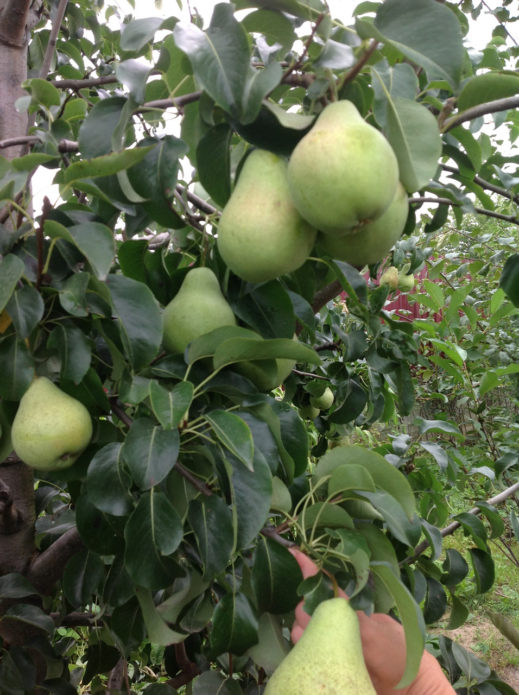
Pears Just Maria appeared in Russia quite recently, but have already earned the love of many gardeners
Originally the variety was called Maria. Do not confuse it with the pear of the same name, bred in Crimea. There is also an Italian variety Santa Maria, which appeared in Russia quite recently.
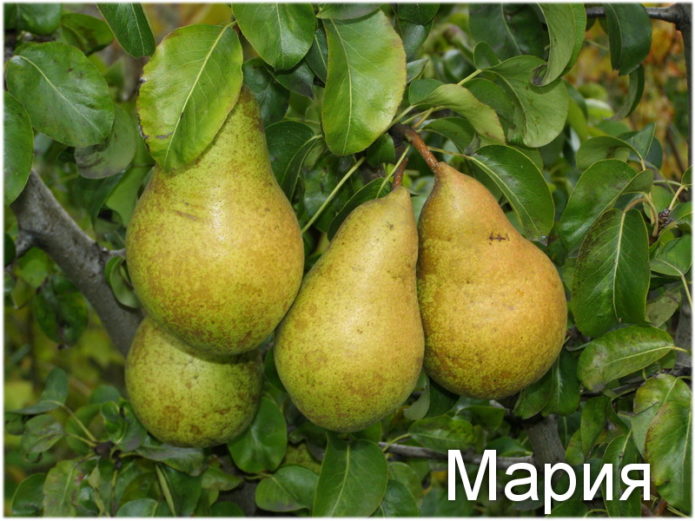
The Russian pear Maria should not be confused with the almost eponymous variety of Belarusian selection
In terms of ripening Just Maria is an autumn variety. Most of the harvest is harvested in October. Fruiting is massive, but sometimes stretches until November. Moreover, the vagaries of the weather during the summer and winter cold have little effect on the yield. On average, you can count on 35–40 kg of pears from an adult tree. A low percentage of "substandard" is characteristic - no more than 10% of the harvested fruits. They do not differ in particular keeping quality - if pears are removed slightly unripe, they will last in the refrigerator at most until the New Year. Then the pulp softens, loses its taste, becomes grainy and unpleasantly "cottony".
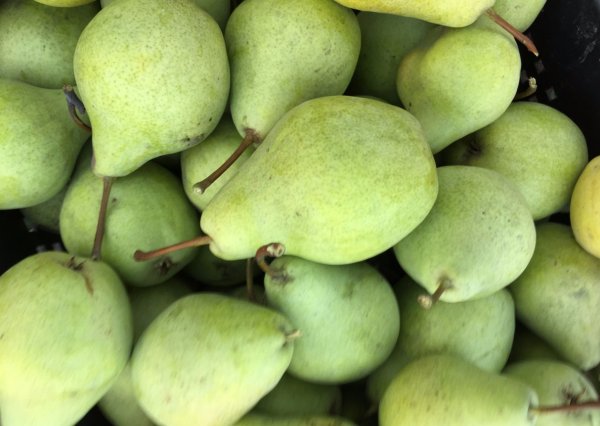
Pear yields Just Maria is not bad, but, unfortunately, it will not be possible to preserve the fruits for a long time
The frost resistance of the variety is at the level of -38 ° C, which makes it possible to grow a crop not only in regions with a favorable climate for it, but also in “zones of risky farming” (Urals, Siberia, the Far East). She also tolerates sharp temperature changes well. Even if the tree suffers from frost, it recovers quickly enough.Experienced gardeners, in order to be on the safe side, plant Just Maria on the rootstocks of varieties specially zoned for this region. A very unfortunate choice in this regard is quince. When grafted onto it, it completely loses its inherent cold resistance. Returning spring frosts are destructive for this pear - if they fall at the time of flowering, the buds massively crumble.
The height of an adult tree at the age of 10 reaches 3–3.5 m. The crown of young specimens is rounded, over time it turns into something resembling a wide pyramid. A spreading pear cannot be called - the crown diameter is about 2.5 m. Particular thickening is uncharacteristic for it, shoots branching not too willingly. The type of fruiting is mixed - pears are formed both on annual ringlets and on fruit spears. The compactness of the tree greatly facilitates plant maintenance and harvesting, which is especially important for older gardeners.
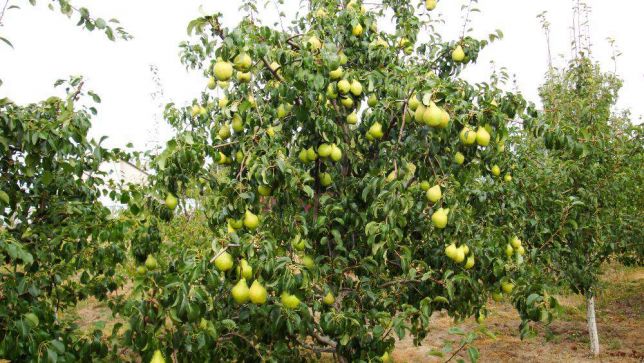
Pear Just Maria cannot be called a dimensional tree with a spreading crown - this greatly facilitates her care and harvesting
The fruits are large enough, with a typical pear-shaped shape. They are practically one-dimensional - the average weight is 180-200 g, some specimens are gaining a mass of 230 g. Subject to competent agricultural technology and rationing of the harvest, you can get fruits weighing 300-350 g, if you are lucky with the weather. The skin is even, smooth, glossy, very thin. Roughness and rustiness characteristic of many varieties is absent. As it matures, its color changes from bright green to greenish-golden. Where the sun shines on the fruit, a pale pink "blush" appears in the form of blurry irregular spots. It is also characterized by the presence of multiple subcutaneous lime-colored dots. The peduncles are thick, short.
Video: what a pear Just Maria looks like
The taste qualities of pears are rated very highly by professional tasters, 4.8 points out of five. Although some gardeners who grow Just Maria, believe that the estimate is unfairly underestimated. And farmers cultivating pears on an industrial scale are sure that they not only compete with the "reference" industrial European varieties (Conference, Williams, Bere Bosk), but also surpass them in many respects.
The pulp is creamy or yellowish-white, oily, literally melting in the mouth, with a pronounced honey aroma. It is not particularly dense, fine-grained, very juicy. The taste is sweet, with a slight, subtle sourness. Some, by the way, do not like it too much, it seems too cloying. But this is purely a matter of personal preference. The sugar content in the pulp is 80-81.5%.
The variety Just Maria is distinguished by its early maturity. The first crop is harvested 3-4 years after the tree is planted in open ground. Fruiting is annual. Also, the creators provided it with high resistance (although not absolute immunity) to the most dangerous diseases typical of the culture - septoria, scab, bacterial cancer.
Most pear varieties are self-fertile. For fruit to set, it requires pollinators to bloom at about the same time. The best options for Just Maria - In Memory of Yakovlev, Duchesse, Koschia. You can, of course, rely on trees growing on the sites of neighbors, but this is not always justified.
The variety Just Maria belongs to the category of dessert. Moreover, the wonderful taste is preserved during the heat treatment. In addition to being eaten fresh, jams, compotes, marmalade, jams, candied fruits, and baking stuffing are prepared from these pears. Dried fruits are also very good.
Video: pear Just Maria: an overview of a popular variety
Landing and preparation for it
Pear Just Maria has a certain "plasticity", successfully adapting and yielding crops in conditions that are far from optimal. But you can count on abundant fruiting only if you try to take into account in advance all the "requirements" of the crop for growing conditions.
As for the timing of planting, it mainly depends on the growing region. If the climate for the culture is more or less suitable, this is determined solely by the personal preferences of the gardener. When planting in autumn, you need to be absolutely sure that there are at least two months left before the first frost. Accordingly, it is not recommended to plant pears later than the first decade of October.
In those areas where the climate and weather are unpredictable, and winter often comes much earlier than the calendar promises, it is better not to risk it and plan the landing of Just Mary in the spring. The optimal time for the procedure is the last decade of April. But it depends a lot on the weather. If the risk of returnable spring frosts is already minimal, planting can be carried out from late March to early May. It is imperative to be in time before the leaf buds “wake up” and enter the “green cone” stage.
The choice of planting material must be approached with all responsibility. Seedlings are purchased exclusively in trustworthy places - specialized stores, nurseries. Shopping at fairs, from the hands of other gardeners is a big risk. It cannot be guaranteed that this is the desired variety. And even the fact that it is generally a pear.
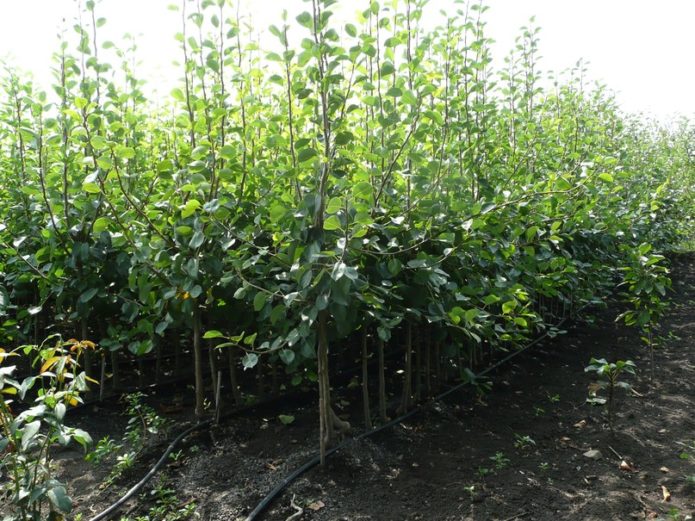
It is advisable to buy pear seedlings in the same area where the garden plot is located - they are better adapted to the peculiarities of the local climate and the vagaries of the weather
Pear seedlings take root best of all at the age of two years. By this time, the tree should grow up to 50-60 cm in height, have several side shoots and a developed root system. There must be a small "build-up" at the roots. A perfectly smooth stem means the plant is derived from seed. It is impossible to guarantee the complete preservation of varietal characteristics in such specimens.
Like all pears, Just Maria reacts positively to heat and sunlight. Although she is shade-tolerant, she is not shade-loving. In the shade, the fruits become noticeably smaller, the taste becomes less pronounced, the yield decreases. Therefore, it is advisable for her to take an open, well-lit and heated area. It should be spacious enough to accommodate not only this tree, but at least two more pollinators. They are often planted not in a row, but as if at the tops of a triangle. The distance between seedlings is not less than the sum of the diameters of the crowns of mature trees. And if the dimensions of the site allow - 5-6 m.
A place closer to the top of the southeast or southwest slope of a gentle hill is ideal for Just Maria. But there the tree can suffer from winds, especially if the winter is little snow. To avoid this, at a certain distance (about 3 m) from the landings, it is desirable to have a barrier that protects them from cold drafts, without shading.
As for the quality of the substrate, in this matter, Mary simply does not impose special requirements. Although, of course, an outright swamp is not suitable for culture. It successfully takes root in both heavy and light soil. Moreover, these disadvantages can be leveled by introducing large river sand into the planting pit in the first case, and powdered clay in the second.
Like all fruit trees, this pear does not tolerate acidified substrate. Therefore, the indicators of acid-base balance must be found out in advance and brought to optimal ones by adding dolomite flour, slaked lime, eggshells crushed to a powdery state (500-600 g) into the acidic substrate, and fresh needles, peat chips in the alkaline state.

Dolomite flour is a natural soil deoxidizer that does not have side effects when the dosage is observed
The best soil for Prosto Maria is nutritious, but at the same time quite loose, well-permeable to air and water. Stagnation of moisture at the roots of pears can not be tolerated categorically. For this reason, lowlands should be immediately excluded from the list of possible landing sites. Melt and rain water does not leave there for a long time, moist moist air accumulates there.
The pear gets along well with almost all garden crops with the exception of mountain ash. With the latter, she has a lot of common pests. If they are located in the neighborhood, it is almost impossible to avoid the "epidemic".
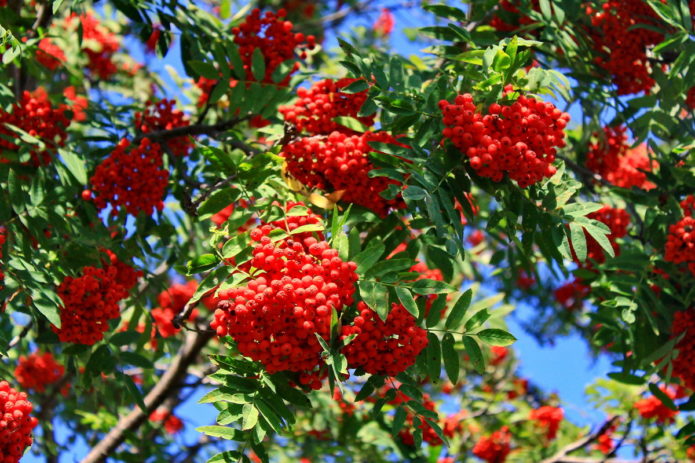
Rowan in the garden is placed as far as possible from the pear in order to avoid massive attacks of pests
A landing pit for a pear is always prepared in advance. If planting is planned in spring - in general from autumn, otherwise - at least 15–20 days before it. The approximate depth is about 60 cm, the diameter is 70–90 cm. Drainage is required at the bottom (layer at least 5 cm thick). Expanded clay, pebbles, clay shards, brick chips will not allow moisture to stagnate at the roots.
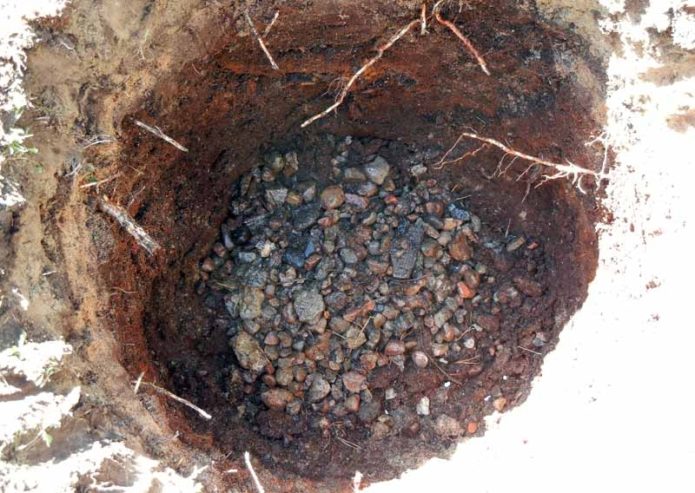
The pear does not like stagnation of moisture at the roots very much, therefore, a drainage layer is required at the bottom of the planting pit
The top layer of the earth extracted from the pit is the most fertile. It is laid separately and mixed with fertilizers - humus or rotted compost (17–20 l), simple superphosphate (60–70 g), potassium nitrate (15–25 g), ammonium sulfate (30–40 g). All this mixture is poured back to the bottom of the pit so as to form a small mound. Then it is covered with a sheet of slate, roofing felt, and other material that does not allow water to pass through so that nutrients are not washed out of the soil. Those who prefer natural agriculture can replace mineral fertilizers with sifted wood ash (1.5 l). And green manure plants from the legume family will help saturate the soil with nitrogen. They are planted in a selected area a year before the pear is planted.
There is nothing difficult in planting a pear in a permanent place. The only remark is that it is more convenient to carry out the procedure together. It practically does not differ from planting other fruit trees.
- Plants with an open root system are soaked in water at room temperature about a day before planting. You can add 1–2 g of potassium permanganate to it to prevent the development of fungal diseases or any biostimulant to increase the plant's immunity. Then the roots of the plant are examined, cut to 3-5 cm and coated with a mixture of powdered clay and fresh manure. The correct mass is similar in consistency to a thick cream. Then the mixture must be allowed to dry in the sun for several hours. Pears in containers should be watered abundantly about an hour before planting.
- A peg is driven into the landing pit, slightly stepping back from the center, for support. Its length should be at least 15–20 cm longer than the height of the seedling. Place it so as to cover the pear from the south side. The soil at the bottom is watered moderately.
- The tree is placed in the pit so that its roots are directed down the "slopes" of the mound. Then the hole is covered with small portions of soil. To avoid the appearance of air "bubbles", the soil is periodically compacted with your hands, and the tree is gently shaken, holding the trunk. It is necessary to constantly monitor the location of the root collar. When the hole is completely filled up, it should be 5–7 cm above the soil level.
- Having reached the edges of the pit, the soil is compacted. Then the pear is watered abundantly, spending 25-30 liters of water.When it is absorbed, a trunk circle with a diameter of about 50 cm is covered with mulch - humus, peat, mowed grass.
- The existing side shoots are cut to the point of growth. The center conductor is shortened by 10-15 cm. Its height should be about 50 cm. The seedling is securely, but not too tightly tied to the support.

Mulch prevents weeds from overgrowing the near-stem circle and does not allow moisture to quickly evaporate from the soil
Video: planting a pear seedling in the ground
Nuances of culture care
Gardeners rightly point out that the Just Maria pear is relatively unpretentious in care. However, just planting a tree and forgetting about it, and then regularly harvesting the crop will not work. Abundant fruiting is possible only under the condition of competent agricultural technology. But nothing supernatural from the gardener is required. It is enough to water this pear correctly, apply fertilizers, prune and maintain cleanliness in the trunk circle. In regions where severe winters with little snow are by no means uncommon, preparation for cold weather is also added. After all, it is better to play it safe than to try to reanimate a severely frozen tree for several seasons.
Watering
Drought Simply Maria tolerates quite well. Therefore, there is no need to moisten the soil as soon as the moisture leaves the upper soil layers. The first watering in the spring is carried out immediately after the substrate has melted enough to loosen it, the second - when the leaves open, the third - just before flowering.
The frequency of watering during the season depends on how cool and rainy the summer is. If there is no extreme heat and drought, three times are enough - in early June, in the 20th of July and in mid-August. The last time Just Mary is watered in the second decade of September. Then watering is reduced to the required minimum. This is necessary so that the pears gain the sweetness and juiciness inherent in the variety and do not crack.
You may also need the so-called water-charging irrigation. It is carried out after the harvest (after about two weeks), if the autumn is warm and poor in precipitation. For an adult tree, 60–80 liters are consumed against the usual rate of 35–50 liters. Such watering helps the pear to properly prepare for the upcoming wintering.
During the first season, the pear seedling is watered weekly, spending about 10 liters per tree.
The most suitable method is sprinkling. The soil must be soaked at least 80 cm deep. The usual rate is 20-30 l / m². Or water is poured into circular grooves about 10 cm deep. Several pieces of them are dug at intervals of 15–20 cm, the latter should approximately coincide with the diameter of the crown.
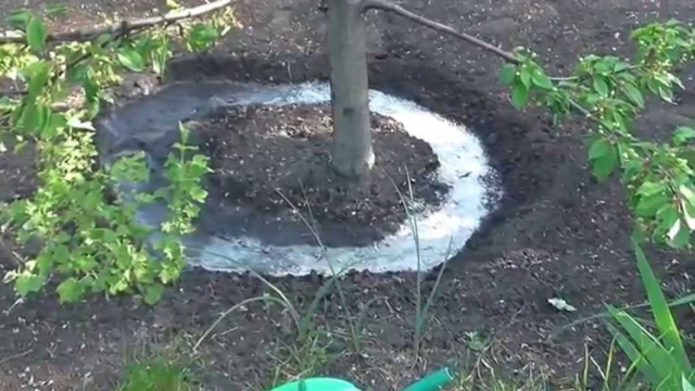
When watering a pear into the furrows, water can be poured into the grooves several times, after the previous portion has been absorbed
Fertilization
Fertilizers begin to be applied in the second season of the pear tree in a permanent place. A planting pit prepared in accordance with the recommendations contains enough nutrients for its growth and development. The fact that the pear needs feeding is evidenced by a small annual increase. Normally, for a young seedling, it should be at least 40 cm, for a fruit-bearing tree - about 20 cm.
It's just that Maria reacts very positively to natural organics. At least once every three years, in the spring in the near-trunk circle during the first loosening, it is necessary to distribute humus or rotted compost at the rate of 8-10 kg / m². Mineral nitrogen fertilizers are applied every year. Usually 10-15 g / m² is sufficient. You can distribute the general rate by 2-3 times. In this case, nitrogen fertilization is applied as soon as the leaves bloom, about a week before and immediately after flowering.
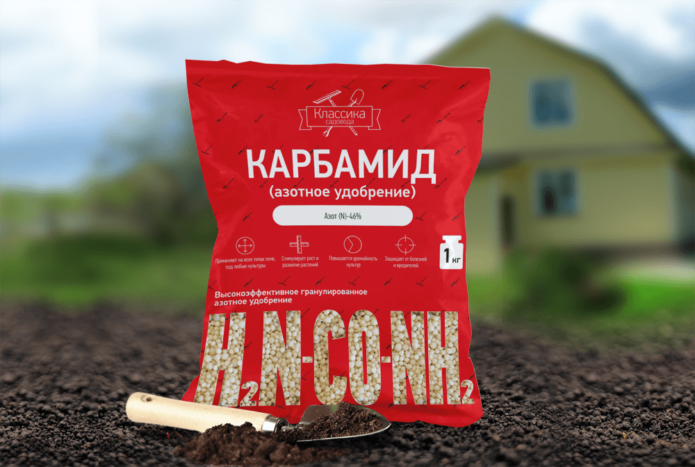
Carbamide, like other nitrogen-containing fertilizers, stimulates the pear tree to actively build up green mass
It is impossible to introduce nitrogen simultaneously with humus, otherwise the roots of the plant will simply "burn out".The minimum interval between these dressings is 4–5 days.
Approximately 7-10 days after flowering, the pear needs a complex feeding. It is just that both complex nitrogen-phosphorus-potassium preparations (Nitrofoska, Diammofoska, Azofoska) and special fertilizers for fruit trees (Bona Forte, Gera, Agricola, Master) are suitable for Maria. There is also a natural alternative - infusion of fresh cow dung, bird droppings, nettle or dandelion leaves. The norm is about 25-30 liters per adult plant.

The fact that the infusion of nettle is ready can be judged by the characteristic odor spreading from the container with feeding
Foliar dressing is useful during the summer. Their frequency depends on the state of the pear Just Mary. Usually once a month is enough. Use the same complex fertilizers or a self-prepared solution. Per liter of water take 1-2 g of boric acid, potassium permanganate, zinc sulfate, magnesium sulfate, copper sulfate.
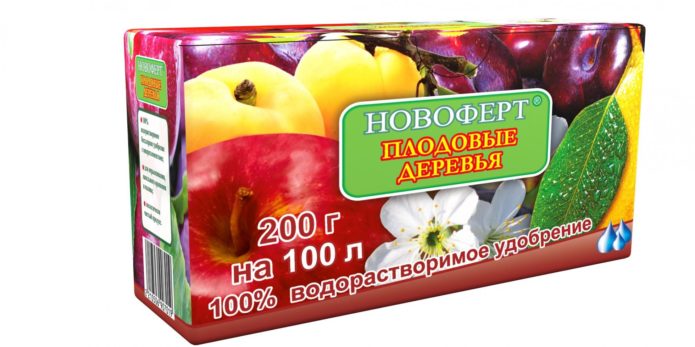
Complex fertilizer for fruit trees contains all the trace elements necessary for crops, but the nutrient solution can be prepared independently
Ripening fruits need phosphorus and potassium. For 10 liters of water, take 25-30 g of simple superphosphate and potassium nitrate. There are also special fertilizers without nitrogen content (ABA, Autumn). But you can replace them with ordinary wood ash. Depending on the weather, it is applied dry (it must be embedded in the soil during the loosening process) or in the form of an infusion. Enough 120-150 g / m².
Video: tips for caring for a pear
Crown formation
The crown of Prosto Maria is not particularly thickened, the tree is quite compact. Nevertheless, pruning for her is a mandatory procedure. A started pear looks very untidy and does not bear fruit too much.
The main part of the work on the formation of the crown can be carried out both in spring and in autumn. In both cases, the outside temperature should be positive. In the spring you need to be in time before the leaf buds "wake up", in the fall - wait for the foliage to completely fall off.
The easiest option for a not too experienced gardener is a sparse-tiered crown. It takes 4–5 years to form it. The finished tree is 3-4 tiers, consisting of 4-5 skeletal branches. The interval between them is 20–30 cm. The height of the tree is limited by cutting off the central shoot at a height of 15–20 cm above the last tier.
Pear formation begins in the second season in the open field. From the available lateral shoots, 4–5 of the strongest are selected, extending from the trunk at approximately the same not too acute angle. The remaining branches are removed to the point of growth. The next year, the second tier is laid over the first. At the same time, 4–5 shoots formed in this season are left on the skeletal branches of the first order. Preference is given to those that grow up and out. The overgrowth directed downward or thickening the crown is immediately disposed of. The branch itself is shortened by 10-15 cm. In the third year, simultaneously with the formation of the next tier, the same number of branches of the third order is left on the first.
When the desired configuration is achieved, it only needs to be maintained in the proper form. Every year they get rid of weak, twisted, thickening branches. You also need to cut off tops - thick shoots directed vertically upwards. In principle, they do not bear fruit. But if the winter is expected to be very harsh, you can leave a few pieces as a safety net as a possible replacement for skeletal branches.
If formative pruning is carried out in the spring, nitrogen fertilization should not be applied immediately afterwards. This will negatively affect the taste of the fruit.
Regular time should be devoted to sanitary pruning. In the spring, they get rid of all the branches that have frozen over the winter, broken under the weight of snow and ice. In autumn - from those damaged by diseases and insects, dried up.It is not recommended to disturb the tree in summer. At this time, you can only remove tops and individual leaves, which prevent the access of light to the fruit.
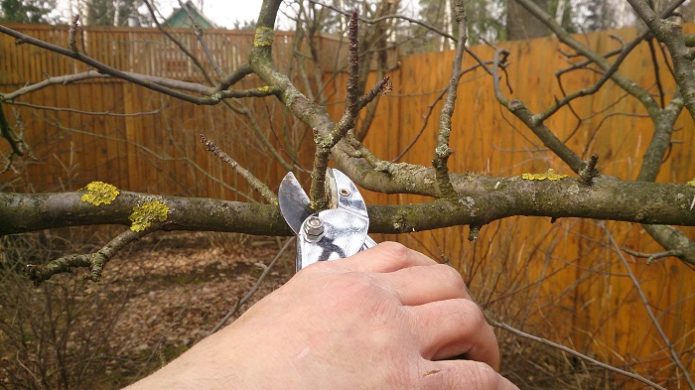
Any damage caused to the pear during the pruning process is a "gateway" for infections, so in no case should you forget about disinfecting instruments and treating "wounds"
Cut leaves and shoots are removed from the trunk circle and burned. It is a very suitable wintering place for many pests and spores of pathogenic fungi.
Video: how to properly prune a pear
Preparing for winter
Frost resistance of Just Mary is such that she will endure winters in the European part of Russia without prejudice to herself. And when growing in the Urals and to the east, you will have to build a shelter.
Preparation for winter begins with cleaning the trunk circle. It is necessary to remove all fallen fruits, fallen leaves, broken branches, and other plant debris. The mulch layer is renewed, bringing its thickness up to 10 cm in the near-trunk circle and up to 25-30 cm near the trunk itself. It is advisable to use humus. Then the trunk is covered with whitewashing until the first fork and the lower third of the skeletal branches. It can be either a special store-bought composition or a self-prepared mixture. Whitewashing protects the wood from rodents and sunburn.
Then the base of the trunk is wrapped in several layers of any covering material that must be air-permeable. Polyethylene is absolutely not suitable. It can cause heating of the root collar. But old nylon tights are a good option.
For young seedlings, if the dimensions allow, you can simply tie the branches and put cardboard boxes of a suitable size on top, stuffing them with shavings, sawdust, and scraps of paper. There are also special covers for fruit trees and berry bushes. And for more or less tall pears, you can build something like a hut by covering a frame made of poles with several layers of burlap or the same covering material.
As soon as enough snow falls, it is scooped up to the trunk. During the winter, the snowdrift gradually settles, so it will need to be refilled a couple of times, simultaneously breaking the hard crust of the infusion on the surface.
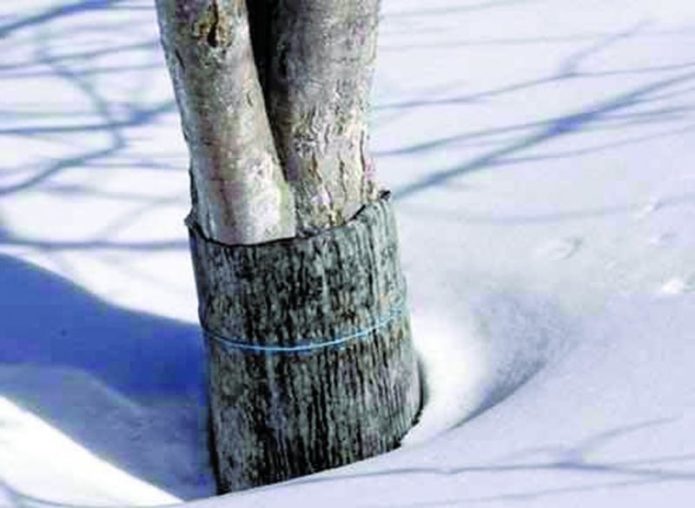
Do not wrap the trunk of a pear for the winter with material that does not allow air to pass through - it is more than likely that it will heat up and develop rot
Video: preparing fruit trees for winter
Prevention of the development of diseases and pest attacks
Prosto Maria's disease resistance is very good, nevertheless, this pear is not completely insured against them, especially if the weather in summer is suitable - cool and rainy. But as a rule, preventive measures are enough to avoid infection.
The best protection against disease-causing fungi is copper-containing preparations. You can use both means tested by many generations of gardeners (Bordeaux liquid, copper sulfate), and new modern fungicides of biological origin (Strobi, Fitosporin-M, Bayleton, Alirin-B). Three treatments are enough per season - before the leaves bloom, about 3-5 days before flowering and 2-3 weeks after harvest.
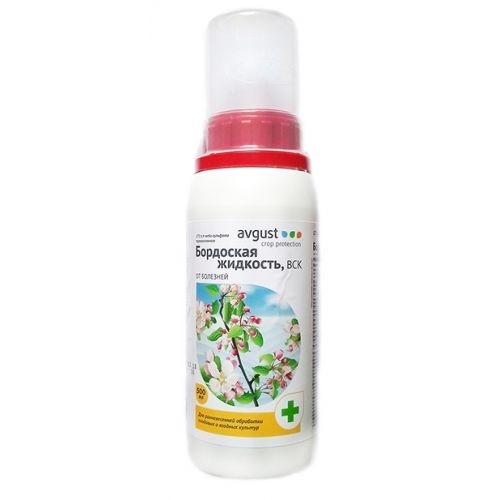
After treatment with Bordeaux liquid, the bark of a pear tree may acquire a bluish tint for a while, this is the norm, and not some kind of exotic disease
During the growing season, you can use folk remedies. The most common are infusion of arrows of onions or garlic, a solution of baking soda or soda ash, colloidal sulfur, diluted kefir. It is enough to spray the tree every 7-10 days. It is useful to periodically add a few crystals of potassium permanganate to the water for irrigation, and add wood ash or crushed chalk to the base of the trunk.
Just Maria has a lot of pests. The greatest danger to it is represented by leafy green aphids, pear honeydew (leaf flies), pear mites, leafworms. Many of them do not tolerate pungent odors, so it is useful to plant spicy herbs in the trunk circle, as well as mint, sage, marigolds, lavender, wormwood.
The period of maximum activity of flying insects is the end of May and June. Home-made traps (containers filled with sugar syrup, liquid honey, jam) or ordinary sticky tape for catching flies are hung next to the tree. They are scared off by the drugs Bitoxibacillin, Entobacterin, Lepidocid.
If it was not possible to prevent pest attacks, any general-action insecticides (Aktara, Aktellik, Inta-Vir, Konfidor-Maxi, Mospilan) are used to combat them. An exception is ticks - they are destroyed with the help of acaricides (Omite, Apollo, Neoron). Usually 3-4 treatments are enough, the frequency is determined based on the manufacturer's instructions.
Video: prevention and treatment of pear diseases
Gardeners reviews
It's just that Maria is one of two successful, in my opinion, varieties of Belarusian selection (the first is an old variety Belorusskaya Late). The rest of the Belarusian pear varieties are so-so, nothing special.
It's just that I've had Maria for seven years, I can't say anything good. Every year, a separate tree sheds almost the entire ovary, the flowers are very sensitive to spring frosts, for example, this year is complete zero, although nearby Williams is red, grafted into the crown of Jurate, with a harvest. Just Maria to her taste - nothing special, loses to the Conference and Williams, in my opinion, sugary-sweet. The fruits are large, beautiful - yes, but they are very few, they quickly overripe. In general, I will re-graft, a variety for an amateur.
I Just Mary gave a noticeable harvest for the second time. I think everyone who loves sweet pears should like this variety. I love, because on the whole I agree with the 4.8 points given by the Belarusians. Storage is worse - last year a couple of fruits lay for only two months. However, the variety, unlike the late Belorusskaya, is not positioned as a pear for storage.
He just took Maria at the institute for two years. Literally persuaded, since the variety was not yet promoted. Very satisfied. Fruiting every year, but not as abundantly as Belorussian late. Withstood frosts at -34 ° С (at the level of snow) and gave a good harvest. Large, beautiful, very tasty. Moreover, the taste when ripening at home and ripened on a tree is very different. Among the disadvantages is high growth. I tried to stop at 3 m, then 4 m, and only at 5 m I keep it for the third year, although there are still too many tops.
Productivity at Prosto Maria is really average, although it blooms profusely, the percentage of ovary is high. Strong growth, but the tree is not spreading. The taste is good, but no frills. The fruits are large, rarely medium. I have never froze even once, tolerates frosts (-30 ° С) without harming the harvest. As for the question about Zabava, which was raised here, I can say that the variety is very good. The vigor is slightly above average, the yield is large and regular. Taste qualities, in my opinion, are better than that of Just Maria. Although, I agree that when they see Just Mary, somehow no one pays special attention to the taste.
It's just that Maria is an amazingly tasty variety of Belarusian selection, she can easily compete with southern varieties. At the tasting Just Maria invariably takes first place. High-yielding, fast-growing, winter-hardy, resistant to diseases and pests.
It's just that Maria is something !!! We have our first harvest, we are in shock !!! We have always only dreamed about pears and thought that it was not with our happiness ... Three years ago, in the spring, they planted Just Maria, Kudesnitsa, Belorusskaya Late and Velessa. This year was the first harvest. Just Maria performed the best. There were about thirty pears, ten of which we plucked ahead of time, because we didn't have the patience to wait. A couple of days ago they removed the rest. Now here they are in the basement, a couple of pieces a day ripening. It tastes like delicious pears.
In 2013, I bought and planted a pear of the Prosto Maria variety. In 2015, two fruits were set on the tree. Wasps began to eat them on August 25 (ripe). Conclusion: pear Just Maria is a SUMMER variety. I do not argue, high taste.
The pear variety Just Maria appeared on sale relatively recently, but has already won the love of Russian gardeners. It is valued for its non-capricious care, high disease resistance, frost resistance, good yield. The taste of the fruit should also be noted - they are very sweet, juicy, with delicate pulp. There is nothing difficult in caring for a tree; not even a particularly experienced gardener can handle it.
